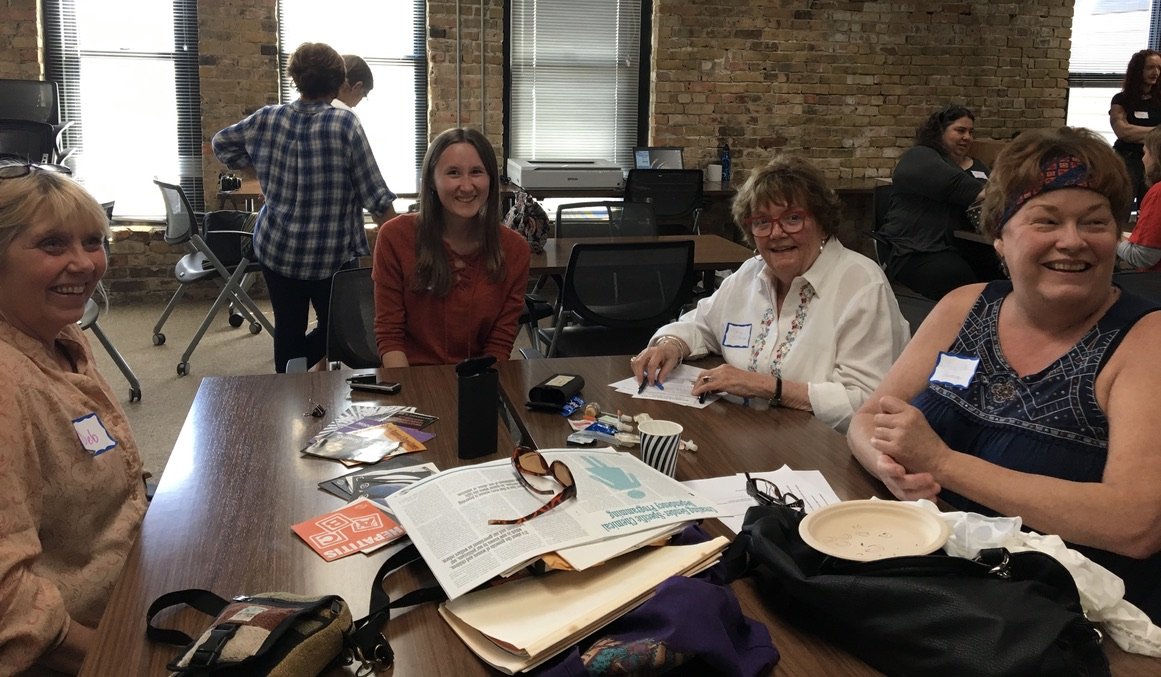Remembering
Camp Scott
Songs and Memories
From a Lost Girl Scout Camp
The Remembering Camp Scott archive was created to preserve and share joyful memories of the former Magic Empire Council of Girl Scouts beloved Camp Scott, a sleep-away camp founded in 1928 and situated on 400 acres in northeastern Oklahoma.
This archive is a visible, interactive way to revisit the camaraderie, beauty, and sisterhood that made Camp Scott a beloved place in the hearts and memories of Girl Scouts who spent time there. All of the contributions are from former campers, counselors, and staff who were active Girl Scouts in eastern Oklahoma between the 1950s and 1980s.
Women With
a Point!
Harm Reduction History in Minnesota
Founded in Minneapolis, Minnesota during the HIV/AIDS epidemic, Women With A Point! was the first needle exchange in the United States to focus its services primarily on the needs of women drug users in the mid 1990s. Several years later, their harm reduction services expanded to include anyone in need of their services, and their name was changed to AccessWorks!
This digital collection was created in May 2017 at a one-day event in Minneapolis to document one aspect of harm reduction history in Minnesota. The collection also highlights the work of other local people and organizations who worked in harm reduction, HIV/AIDS prevention, youth outreach, homelessness, and public health.
Do Less Harm
Ethical Questions for Health Historians
In Do Less Harm, editors Courtney E. Thompson and Kylie M. Smith bring together a group of leading historians and scholars to confront one of the most pressing questions in health history: How can we ethically approach stories of medicine and health without perpetuating harm? This thought-provoking collection invites readers into a crucial conversation about the responsibilities of historians when documenting the past.
Remembering Rondo
An Inside Look at a History Harvest
American Historical Association, Perspectives, published March 2017
In the late 1950s, the Department of Transportation started construction on I-94, linking the downtowns of Minneapolis and St. Paul. Planners had two options: a northern route along abandoned railroad tracks or a central route through Rondo, a majority black neighborhood in St. Paul. They chose the latter, splitting the community and bulldozing its business district.
Some Rondo residents battled the construction in the courts; others were forcibly removed by police; still others accepted lowball offers for their homes and moved away. The process changed Rondo forever. Yet for decades, community members implored the city: “Remember Rondo!”
Seen and Heard
Using Digital Community
Engagement to
Reconnect Communities
and Enrich History Pedagogy
University of Cincinnati Press, published April 2020
Equal parts nervous and excited accurately described the emotions of my three students on the day of our History Harvest in May 2017, broadly shared and advertised as “Chronicling Our Origins: Harm Reduction in Minnesota.” Aside from one community contact person I met by phone, we had no idea who might show up to our quickly planned History Harvest on that sunny Saturday afternoon in Minneapolis.
In one afternoon, we hoped to gather artifacts and oral histories from a loose cohort of people who worked in the field of harm reduction in Minnesota: current and former outreach workers, harm reduction advocates, and social service professionals who worked with injection drug users and others at risk for contracting HIV or hepatitis since the 1980s. What kind of history would come from this gathering? What new evidence would we discover? Would active drug users show up, too? How might that go?









